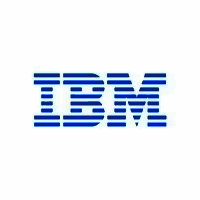Description

IBM Turbonomic

Sensu
Comprehensive Overview: IBM Turbonomic vs Sensu
IBM Turbonomic and Sensu are both tools that serve in the realm of IT infrastructure and application management, but they cater to slightly different needs and use cases within the broader context of IT operations.
IBM Turbonomic
a) Primary Functions and Target Markets
Primary Functions:
- Application Resource Management (ARM): Turbonomic provides real-time, continuous, and automated management of application resources. It ensures applications always perform as expected by automatically adjusting resources across public and private clouds and on-premises infrastructures.
- AI-Driven Automation: Uses AI to understand the behavior of workloads, and automate decision-making for resource provisioning, placement, and configuration.
- Performance Assurance: Ensures service performance by maintaining optimal resource allocation even as demand fluctuates.
Target Markets:
- Enterprises looking for robust infrastructure optimization to support business-critical applications.
- Companies undergoing digital transformation seeking to enhance the efficiency of their hybrid cloud environments.
- IT departments seeking to mitigate resource wastage and control cloud spending while maximizing performance.
b) Market Share and User Base
- Market Position: IBM Turbonomic is recognized for its strong capabilities in resource management and optimization within hybrid cloud environments. It is often adopted by larger enterprises and those with complex IT infrastructures, given its comprehensive feature set.
- User Base: Turbonomic's user base consists largely of medium to large enterprises that require automated, AI-driven operations to manage complex IT environments effectively. It is particularly popular among organizations in sectors such as finance, healthcare, and technology.
c) Key Differentiating Factors
- Autonomous Operations: One of Turbonomic’s standout features is its ability to autonomously manage and optimize resources without human intervention.
- Integration with Hybrid Cloud: Deep integration capabilities with various cloud service providers make it a suitable choice for businesses managing hybrid or multi-cloud environments.
- AI-Powered Insights: Leveraging AI to provide actionable insights and automate resource management, setting it apart from more traditional tools focusing on manual monitoring and management.
Sensu
a) Primary Functions and Target Markets
Primary Functions:
- Monitoring as Code: Sensu provides a platform to define, configure, and deploy monitoring as code, streamlining the deployment and maintenance of monitoring systems.
- Event Monitoring: Sensu focuses on real-time event monitoring and telemetry data collection, facilitating anomaly detection and alerting.
- Flexible Checks: Users can create custom checks to monitor specific parts of their infrastructure using scripts and plugins.
Target Markets:
- Organizations that prioritize infrastructure and application monitoring as a part of their DevOps practices.
- Companies that need a flexible, scalable solution to monitor complex environments, including containers, microservices, and cloud-native applications.
- DevOps teams who prefer utilizing monitoring solutions that integrate seamlessly into their CI/CD pipelines.
b) Market Share and User Base
- Market Position: Sensu is considered a versatile tool for monitoring due to its flexibility and scalable architecture. It has a strong presence among DevOps teams and is popular in agile and cloud-native environments.
- User Base: Primarily used by small to medium-sized enterprises, especially those employing DevOps practices. It enjoys popularity among developers and operations teams who need a customizable monitoring solution.
c) Key Differentiating Factors
- Monitoring as Code: Sensu’s approach to defining monitoring configuration in code form is a significant differentiator, offering a high level of customization and integration with modern software development practices.
- Open Source Roots: Sensu started as an open-source project, which appeals to organizations that prefer open-source solutions or require deep customization options.
- Container-Native Features: Sensu offers native capabilities for monitoring containerized environments, making it particularly suitable for modern, cloud-native architectures.
Comparison Summary
While both IBM Turbonomic and Sensu cater to IT infrastructure and application management, IBM Turbonomic focuses on automation and optimization of resources in dynamic, hybrid cloud environments using AI, targeting larger enterprises. In contrast, Sensu is oriented towards real-time monitoring and is popular among DevOps teams, emphasizing flexibility, scalability, and monitoring as code. Their differences in approach, target user base, and capabilities mark them as complementary rather than directly competing tools in the ecosystem of IT management solutions.
Contact Info

Year founded :
2010
+1 844-438-8872
Not Available
United States
http://www.linkedin.com/company/turbonomic

Year founded :
2010
Not Available
Not Available
Netherlands
Not Available
Feature Similarity Breakdown: IBM Turbonomic, Sensu
When comparing IBM Turbonomic and Sensu, both tools are part of the broader ecosystem of IT monitoring and management solutions but cater to slightly different use cases within that spectrum. Here’s a breakdown of their feature similarities and differences:
a) Core Features in Common
-
Monitoring and Observability:
- Both IBM Turbonomic and Sensu offer comprehensive monitoring capabilities. They provide visibility into infrastructure health, performance, and availability through data collection and analysis.
-
Automation:
- They both support automation to some extent. Turbonomic automates resource management actions, while Sensu offers automation through event processing and orchestration.
-
Integration:
- Both platforms integrate with a variety of third-party tools and services, enhancing their capabilities and flexibility in different IT environments.
b) User Interface Comparison
-
IBM Turbonomic:
- IBM Turbonomic’s UI is more focused on visualization and action. It provides a dashboard that highlights system health and makes recommendations about resource allocations. The UI emphasizes proactive resource management, with a strong focus on decision-making based on analytics.
-
Sensu:
- Sensu’s interface is generally more customizable and modular, focusing on monitoring, alerting, and event management. It tends to provide users with more control over configurations and is designed to be part of larger, integrated observability stacks.
Overall, Turbonomic focuses its UI on simplifying complex decision-making processes about resource allocation, while Sensu emphasizes visibility and control over infrastructure monitoring.
c) Unique Features
-
IBM Turbonomic:
- Resource Optimization: Turbonomic stands out with its ability to automatically optimize resources across hybrid and multi-cloud environments. It continuously adjusts resources to improve performance, efficiency, and compliance.
- AI-Powered Recommendations: It uses AI to generate actionable insights and recommendations for resource allocation and management, going beyond just notification to actionable intelligence.
-
Sensu:
- Event Processing and Custom Metrics: Sensu is unique in its robust event processing capabilities and support for custom metrics, making it highly flexible and adaptive to different monitoring needs.
- Open-Source Flexibility: As Sensu evolved from an open-source project, it retains a strong community-driven development approach, offering users the benefits of open-source flexibility and community support.
In summary, while both IBM Turbonomic and Sensu offer powerful monitoring and automation capabilities, their unique focuses on resource optimization through AI (Turbonomic) and event-driven monitoring with open-source flexibility (Sensu) define their core distinctions.
Features

Not Available

Not Available
Best Fit Use Cases: IBM Turbonomic, Sensu
IBM Turbonomic and Sensu are two distinct platforms with unique strengths, catering to different needs in the IT management sphere. Here's how these tools fit various use cases:
IBM Turbonomic
a) Types of Businesses or Projects Best Suited for IBM Turbonomic:
-
Enterprise-Level Organizations:
- Large enterprises with complex IT infrastructures, including hybrid cloud environments, benefit significantly from IBM Turbonomic. It optimizes workloads automatically, ensuring applications have the resources they need to perform optimally without manual intervention.
-
Financial Services and Banking:
- Industries requiring compliance, reliability, and performance at all times value Turbonomic's ability to ensure application performance and reliability, which are critical for customer trust and regulatory compliance.
-
Healthcare Organizations:
- Given the critical nature of healthcare applications and the need for real-time data processing and availability, Turbonomic helps in automating resource management to enhance the performance of patient-critical systems.
-
E-commerce Platforms:
- Businesses that rely on dynamic and scalable IT infrastructure to manage high web traffic better utilize the tool's capability to optimize cloud resources and control cost while maintaining performance.
d) Catering to Different Industry Verticals or Company Sizes:
- Large Enterprises: Turbonomic’s robust automation features are ideal for complex, large-scale IT environments that require efficient management across multiple platforms (virtual, cloud, and hybrid).
- Industry-Specific Needs: It tailors solutions for certain critical industries like banking and healthcare, where operational excellency and regulatory compliance are paramount.
Sensu
b) Scenarios Where Sensu Would Be Preferred:
- Startups and Small to Medium Enterprises (SMEs):
- Ideal for organizations looking for a cost-effective and flexible monitoring framework. Sensu’s open-source options and extensive plugin architecture are well-suited for smaller teams needing customized monitoring solutions.
- DevOps and Agile Development Teams:
- Teams focused on continuous integration/continuous delivery (CI/CD) environments find Sensu beneficial for monitoring dynamic and ephemeral infrastructure.
- Companies with Dynamic and Diverse IT Environments:
- Organizations using a mix of traditional devices, containers, and cloud services can leverage Sensu’s capability to monitor a wide array of systems via its extensible checks and handlers.
d) Catering to Different Industry Verticals or Company Sizes:
- Small to Medium Businesses (SMBs): Its scalable, open-source nature and flexibility make it attractive for smaller companies trying to keep operational costs low while maintaining robust monitoring capabilities.
- Technology-Savvy Verticals: Sensu is preferred in tech industries and companies that have the necessary expertise to customize and extend the platform through its rich API and plugin system, enabling precise and tailored monitoring solutions.
Both IBM Turbonomic and Sensu address distinct needs in IT management, catering to specific industry requirements and company sizes. Turbonomic excels in automating resource optimization for large, complex environments, while Sensu offers a comprehensive and flexible monitoring solution suited for smaller or tech-centric teams requiring granular control.
Pricing

Pricing Not Available

Pricing Not Available
Metrics History
Metrics History
Comparing teamSize across companies
Conclusion & Final Verdict: IBM Turbonomic vs Sensu
Conclusion and Final Verdict for IBM Turbonomic vs. Sensu:
When comparing IBM Turbonomic and Sensu, both products offer distinct capabilities tailored to different needs within IT operations and application performance management. The decision between the two hinges on specific organizational requirements, existing infrastructure, and resources.
a) Considering all factors, which product offers the best overall value?
IBM Turbonomic generally offers the best overall value for enterprises primarily focused on optimizing application performance and making resource management proactive and automated. Its strength lies in its ability to intelligently assess the interdependencies between different IT resources and applications, thus offering detailed insights and automations to enhance performance and cost efficiency. This makes it particularly suitable for larger enterprises with complex IT environments.
Sensu, on the other hand, offers significant value for organizations that require flexible, scalable monitoring solutions that can integrate with a broad range of systems and are willing to invest in building custom monitoring pipelines. It is particularly beneficial for teams that prioritize infrastructure monitoring and have a DevOps mindset.
b) Pros and Cons
IBM Turbonomic:
- Pros:
- Offers advanced automation capabilities that enable proactive management of IT resources.
- Strength in application performance management ensures optimized infrastructure utilization.
- Comprehensive analytics and insights assist in reducing operational costs.
- Strong support from IBM, including integration with other IBM products.
- Cons:
- Can be complex to deploy and configure, requiring skilled personnel.
- Higher cost of entry which may not be suitable for smaller businesses.
- Potential over-engineering for organizations that only need basic monitoring.
Sensu:
-
Pros:
- Highly flexible and extensible monitoring platform.
- Strong integration capabilities with existing DevOps tools and workflows.
- Open-source options available, which can be cost-effective.
- Offers a scalable solution suitable for cloud-native environments.
-
Cons:
- Requires significant setup and configuration effort to fully leverage its capabilities.
- May lack some of the deeper, automated decision-making features in Turbonomic.
- Community support varies with the open-source version, potentially requiring additional investment in enterprise support.
c) Specific Recommendations
-
For Enterprises with Complex IT Environments:
- IBM Turbonomic is recommended if there is a need for comprehensive application performance optimization and resource management automation, especially in complex, hybrid, or multi-cloud environments.
-
For DevOps and Cloud-Native Organizations:
- Sensu is ideal for teams focused on flexibility and wanting to integrate monitoring deeply into their existing tools and workflow. This is particularly suitable for organizations familiar with open-source solutions and those who have a strong engineering team capable of building custom solutions.
-
Cost Considerations:
- For smaller organizations or those with constrained budgets, starting with Sensu's open-source version can be a valuable approach to get excellent monitoring capabilities with minimal initial investment.
Ultimately, the choice between IBM Turbonomic and Sensu should be driven by the organization’s specific needs and capabilities. Carefully evaluating current infrastructure, future growth plans, and the technical team's expertise will help determine the product that offers the best value for the organization.
Add to compare
Add similar companies




